The past few years I’ve been writing about the “munaisance” movement permeating golf architecture at the city level. Richmond experienced this trend in 2020 when the county invested money into Belmont Golf Course, a 1917 Tillinghast design that held the 1949 PGA Championship (Sam Snead won 3&2) however, it isn’t a traditional renovation but rather a revolutionary one. The Love Design team with lead architect Scot Sherman decided on a 12 hole course complimented by a six hole par three course, a putting course, and full scale practice facility.

There’s been a big push to “play it forward” and “play nine” but the twelve hole concept, which was novel to me, won me over with a great routing, stimulating architecture, and a pace that was just over a couple hours. I thought it was the perfect compromise as eighteen is sometimes too much and nine is not enough. Jack Nicklaus lobbied for this concept a couple decades ago, and Belmont may be the catalyst for other forward thinking projects. Maybe a great piece of land can’t yield eighteen holes but could twelve, or instead of a municipality closing their golf asset, they convert it to this model.

(The 320 yard opening hole plays downhill to this receptive green that is well defended by sand. There are multiple options off the tee, but the one that finds the fairway will lead to a good scoring opportunity.)
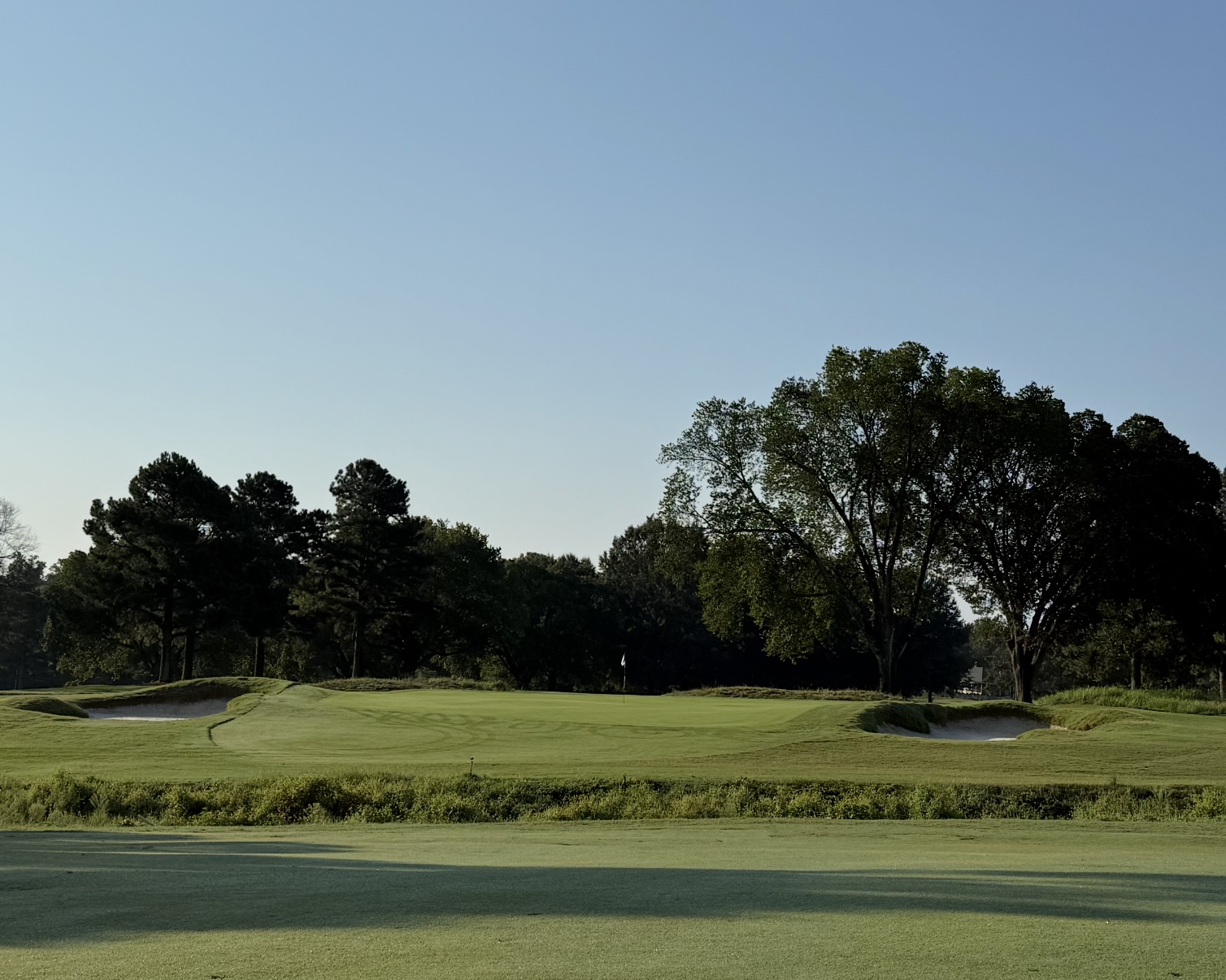
(The 505 yard par five fourth plays slightly downhill before going uphill to a green fronted by a hazard. The second shot is most important as bunkers guard the right and a ravine protects the left. A smart, well executed attack will produce a good birdie chance.)
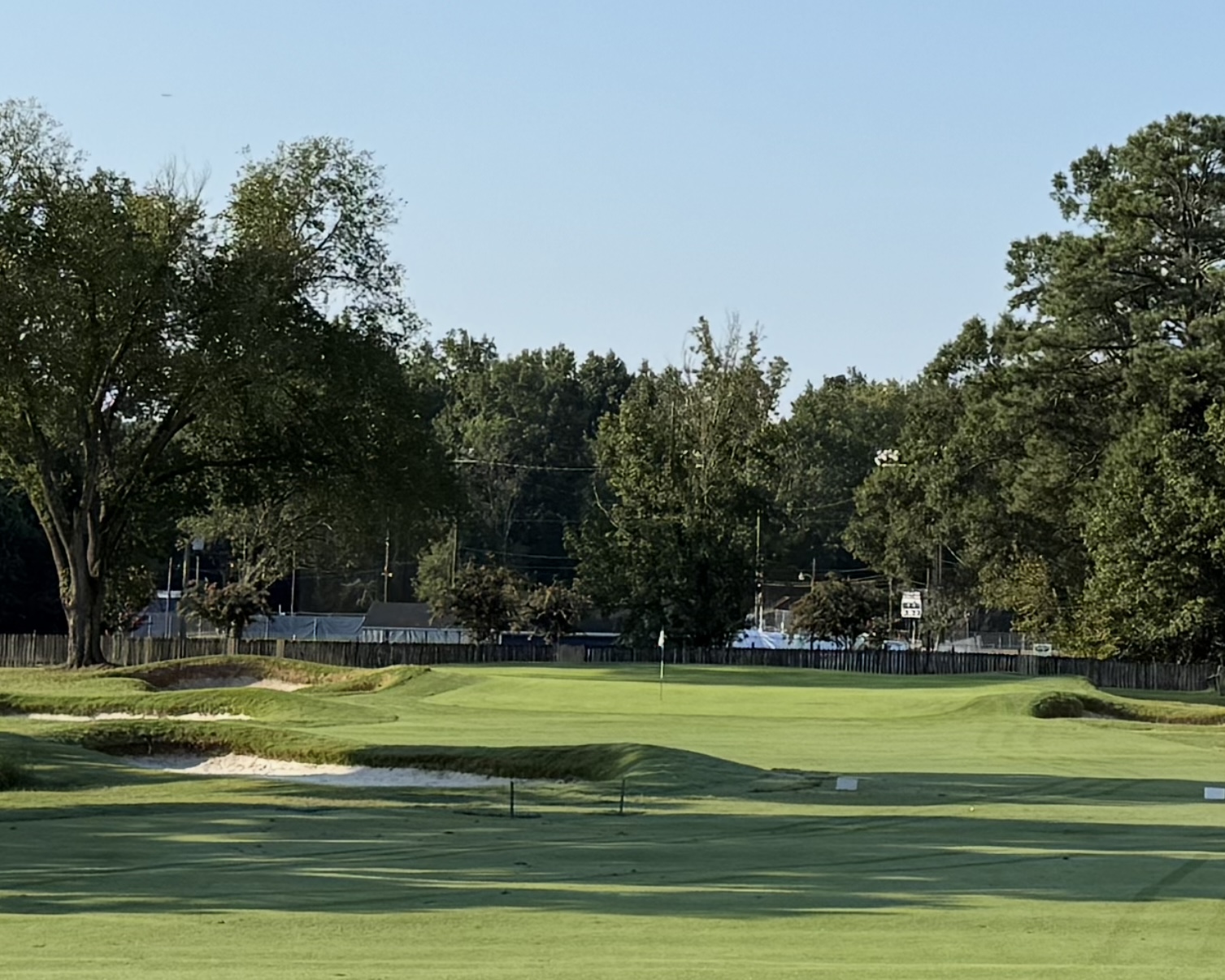
(After a couple back to back par fives at three and four, the 450 yard par four fifth strives to secure any stroke you may have gained on the previous two. With the boundary line down the right, a forbidding cross bunker on the left fifty yards short, many will play this like a third par five.)
The first three holes play on the clubhouse side before one goes through a tunnel to play 4-11 on the south side. The southern parcel of land has good movement to it including elevation change, a creek that defines the eastern boundary and grassy ravine that influences play on four holes. Another trip through the tunnel brings us back to the starter’s shed to play a par three that lies perpendicular to the opening hole.
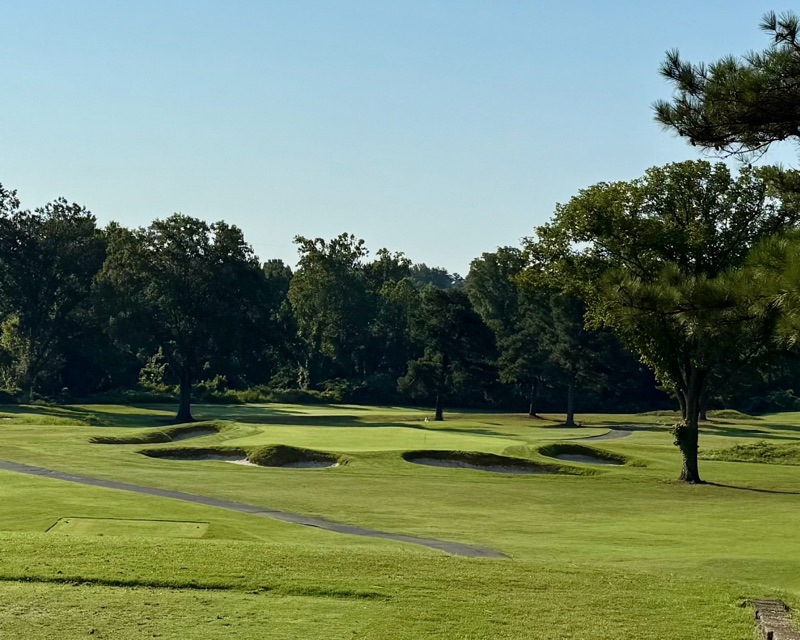
(The 180 yard par three seventh plays downhill to green ringed by bunkers. Good internal contouring will funnel most shots towards today’s pin position on the right. The back left will prove the hardest to get close.)

(The 310 yard par four tenth is a really fun hole with a centerline bunker being a great aiming point for conservative and aggressive strategies. Note the hillside that frames the outside of this dogleg right hole. Long hitters could try to cut it off the far end and drive it…
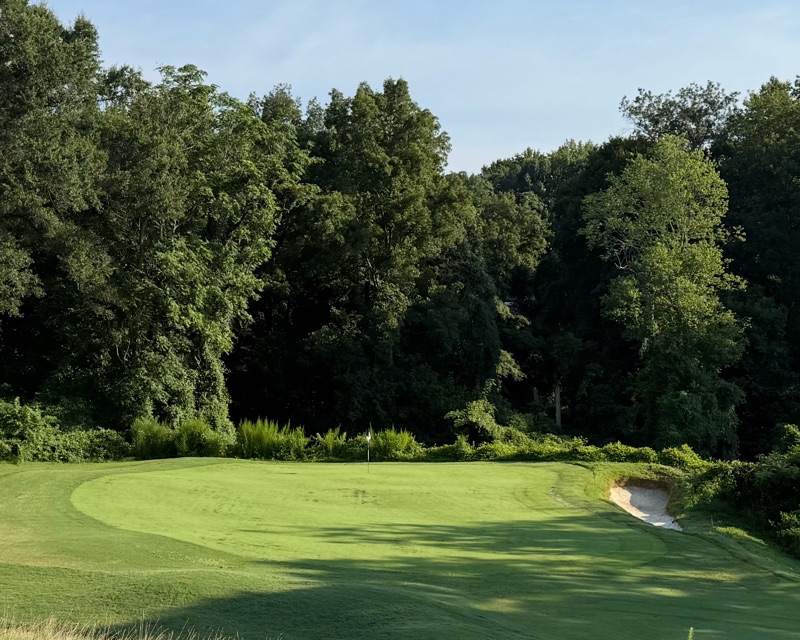
…the putting surface is tucked into a corner of the property with the creek guarding the entire right side. It’s the toughest green on the course too with a lot of contouring in it. Birdie will be well earned.)
I was really impressed with Belmont and could see this being my home course if I lived in town. I think as an introductory progression to new golfers or as a father spending time with their children, the option to play the par three course or even goof off on the putting course, makes this a cool experience. The price point is excellent too. I paid $45 for the twelve holes. I think this place deserves more national recognition, especially when other high end facilities offer similar offerings for quadruple the price. I give Belmont a solid 5 (good)(worth driving an hour to play).
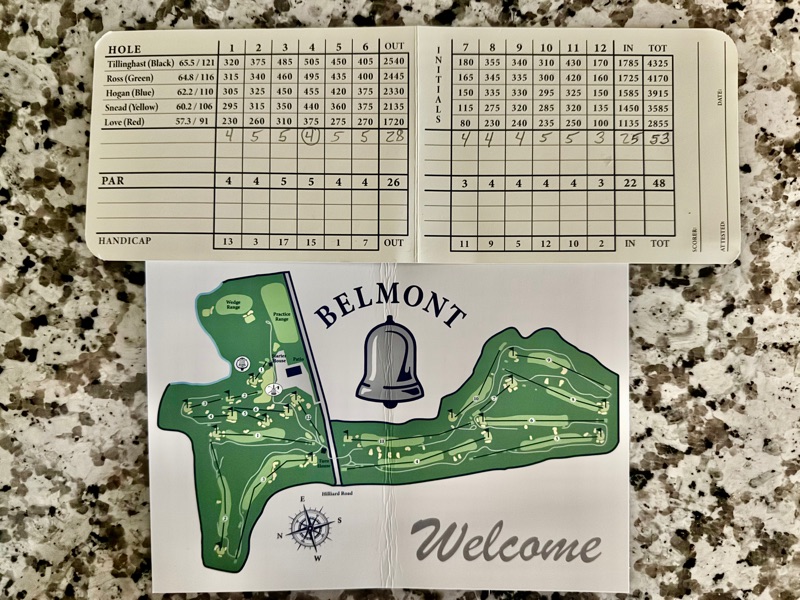
(I played with a local golfer and we had the first tee time of the day (7:24) and finished in just over two hours (9:40). I played the Ross tees which if add 7-9 to the first six holes would equal 3,290 yards. That’s a good comparison for those wondering what the length equivalent is.)
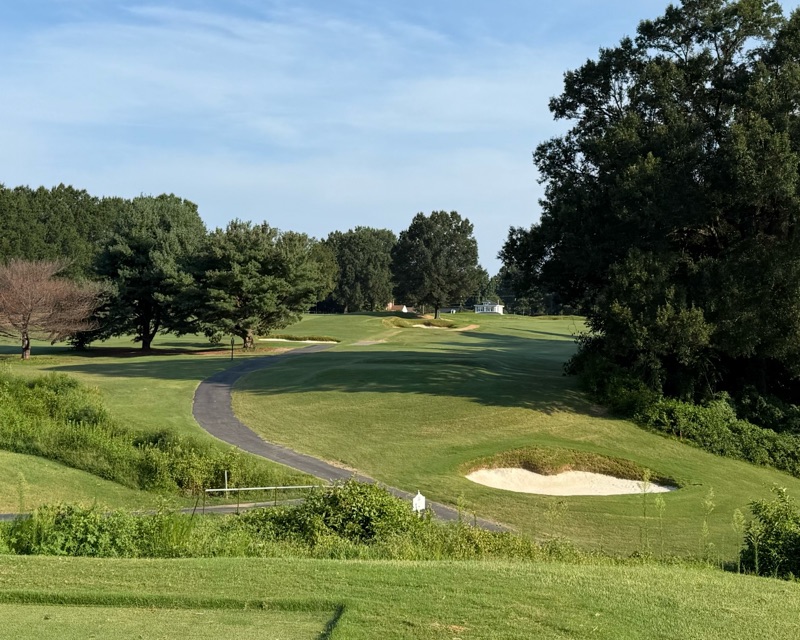
(The 430 yard par four eleventh plays uphill to a blind green atop the rise. It’s open in the front for a low runner but if you bail left, a bunker 40-50 yards short will trap you.)
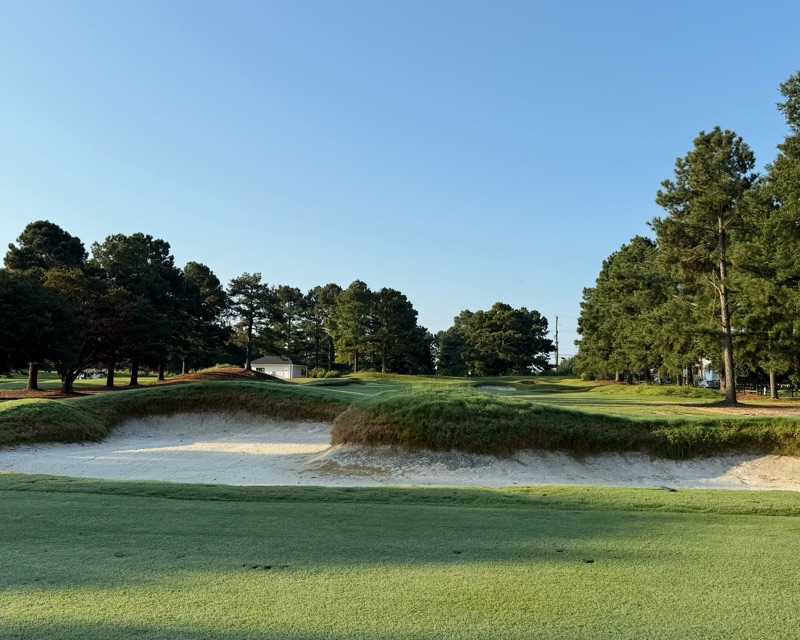
(A set of cross bunkers provides the strategy on the 475 yards par five third. Note the deep lip as the ball goes further into the trap. Avoid the fairway bunkers!)

(On a personal note, this is blog #485. Let the countdown begin for 500!!!)
No comments:
Post a Comment